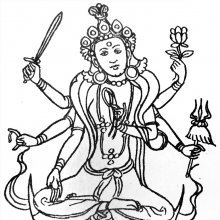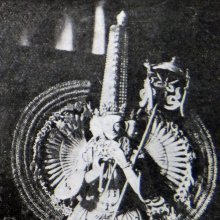Sadhanamala, Sādhanamālā, Sadhana-mala: 3 definitions
Introduction:
Sadhanamala means something in Buddhism, Pali, the history of ancient India. If you want to know the exact meaning, history, etymology or English translation of this term then check out the descriptions on this page. Add your comment or reference to a book if you want to contribute to this summary article.
Images (photo gallery)
(+93 more images available)
In Buddhism
Tibetan Buddhism (Vajrayana or tantric Buddhism)
Source: archive.org: The Indian Buddhist IconographySādhanamālā (साधनमाला) not only gives valuable details regarding the deities, but a study of this work revelas much historical and cultural information on the Tāntric period, the Tāntric philosophy, and its psychic exercises, and on authors, Siddhas, Mantras, Maṇḍalas, and magic as prevalent among the Buddhists. The special form of Buddhism which developed in the Tāntric period is called the Vajrayāna, and the Sādhanamālā throws a great deal of light on this obscure path of Buddhism which was current in India from the 7th to the 13th century A.D

Tibetan Buddhism includes schools such as Nyingma, Kadampa, Kagyu and Gelug. Their primary canon of literature is divided in two broad categories: The Kangyur, which consists of Buddha’s words, and the Tengyur, which includes commentaries from various sources. Esotericism and tantra techniques (vajrayāna) are collected indepently.
General definition (in Buddhism)
Source: Google Books: Illustrated Manuscripts and the Buddhist Book Cult in South AsiaSādhanamālā (साधनमाला) (or Sādhanasamuccaya) is a collection of sādhana texts that contain detailed instructions for rituals. [...] The Sādhanamālā is a compilation of different practices performed by prominent teachers and visionary practitioners, sometimes incorporating iconographies of famous images. [...] A total of 47 names of masters are given in the Sādhanamālā. Some authors of sādhanas are well-known scholars of Indian Buddhism, such as Abhayākaragupta of Bikramaśīla monastery and Advayavajra (Avadhūtipā).
India history and geography
Source: archive.org: The Indian Buddhist Iconography (history)Sādhanamālā (साधनमाला) is the most valuable and important aid to Buddhist iconograph, not only because it records the latest advances in psychic research of the Vajrayāna Buddhists, but also because it was a product of a period when Buddhism was about to be destroyed in Bengal due to Mussalman (Muslim) invasion.

The history of India traces the identification of countries, villages, towns and other regions of India, as well as mythology, zoology, royal dynasties, rulers, tribes, local festivities and traditions and regional languages. Ancient India enjoyed religious freedom and encourages the path of Dharma, a concept common to Buddhism, Hinduism, and Jainism.
See also (Relevant definitions)
Partial matches: Sadhana, Maala, Mala.
Starts with: Sadhanamalatantra.
Ends with: Guhyasamayasadhanamala.
Full-text (+519): Sadhanamalatantra, Khandaroha, Heruka, Vajrajvalanalarka, Khadiravanitara, Trailokyavashamkara, Bhutadamara, Mahamantranusarini, Varttali, Vasumatishri, Sitatara, Vishvadakini, Mahashitavati, Bhima, Khasarpana, Manjuvara, Oddiyana, Parnashabari, Alimanmatha, Kurukullaka.
Relevant text
Search found 8 books and stories containing Sadhanamala, Sādhanamālā, Sadhana-mala, Sādhana-mālā; (plurals include: Sadhanamalas, Sādhanamālās, malas, mālās). You can also click to the full overview containing English textual excerpts. Below are direct links for the most relevant articles:
Sripura (Archaeological Survey) (by Bikash Chandra Pradhan)
Scultures of Buddhist Goddesses (4): Vasudhara < [Chapter 3 - Sculptural Programme]
Scultures of Buddhist Goddesses (3): Vajratara < [Chapter 3 - Sculptural Programme]
Scultures of Buddhist Goddesses (1): Tara < [Chapter 3 - Sculptural Programme]
The Indian Buddhist Iconography (by Benoytosh Bhattachacharyya)
Figure 196 - Five Protectresses (1): Mahāpratisarā
Figure 200 - Five Protectresses (5): Mahāmāyūrī
Stupas in Orissa (Study) (by Meenakshi Chauley)
Emanations of Ratnasambhava < [Chapter 5]
Uddiyana Pitha (in Tantric Buddhism) < [Chapter 2]
Vajrayana form of Buddhism < [Chapter 2]
The Practice Manual of Noble Tārā Kurukullā (by Dharmachakra Translation Committee)
Lord Hayagriva in Sanskrit Literature (by Anindita Adhikari)
Trishashti Shalaka Purusha Caritra (by Helen M. Johnson)
Part 12: Refutation of Māyā < [Chapter I]
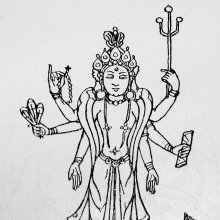
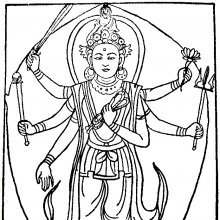
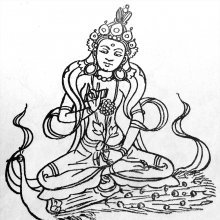
.jpg)
